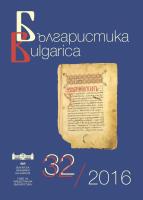
We kindly inform you that, as long as the subject affiliation of our 300.000+ articles is in progress, you might get unsufficient or no results on your third level or second level search. In this case, please broaden your search criteria.

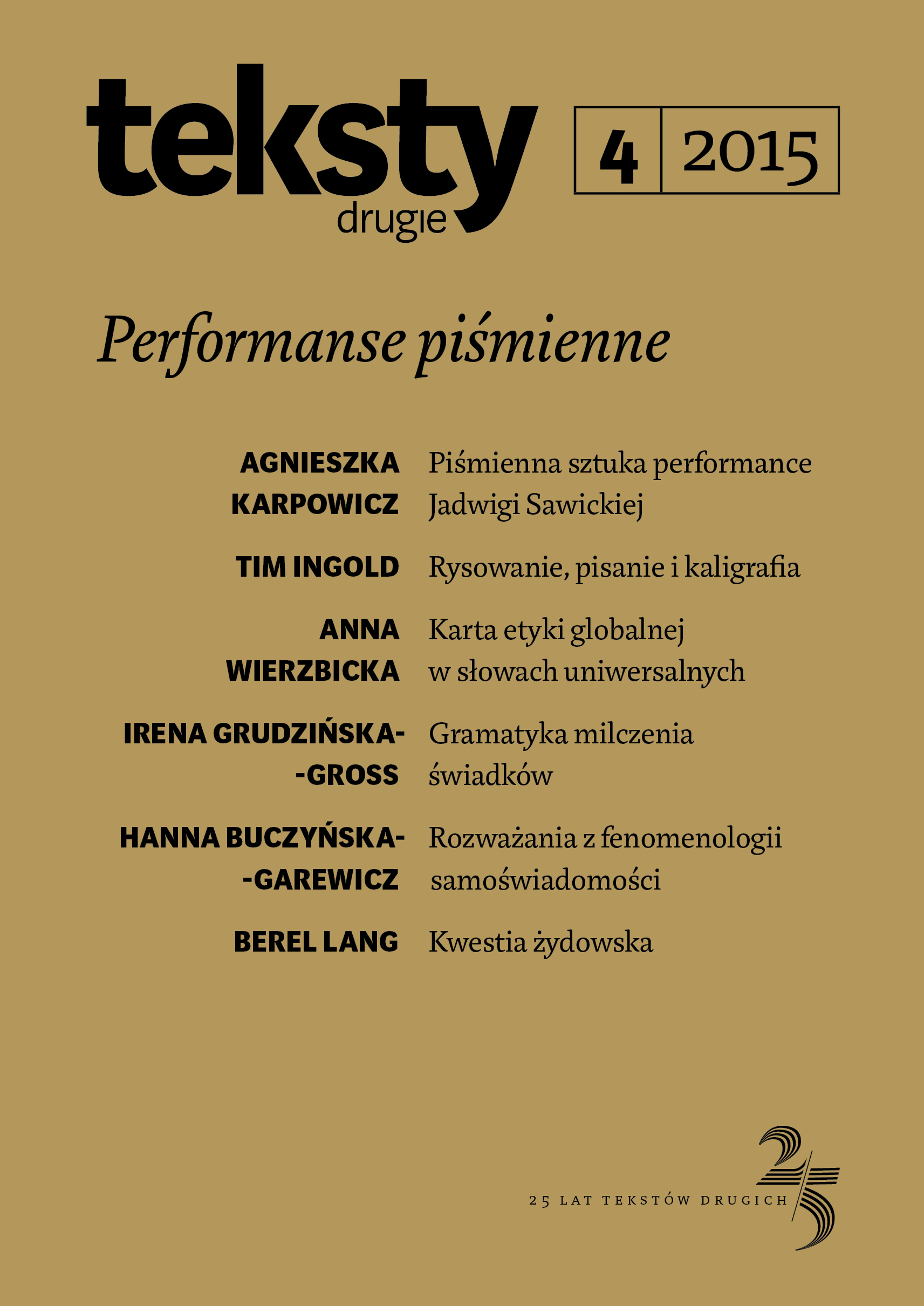
Parfianowicz-Vertun examines the role of literacy practices and verbal creativity in Czech underground culture. She focuses on ways in which underground artists used writing and the written words; the tension between writing and alternative culture, which was largely based on the spoken word; as well as situations in which the act of writing became a performance of sorts. The article explores various aspects of underground culture: music, poetry, fine art and samizdat publishing.
More...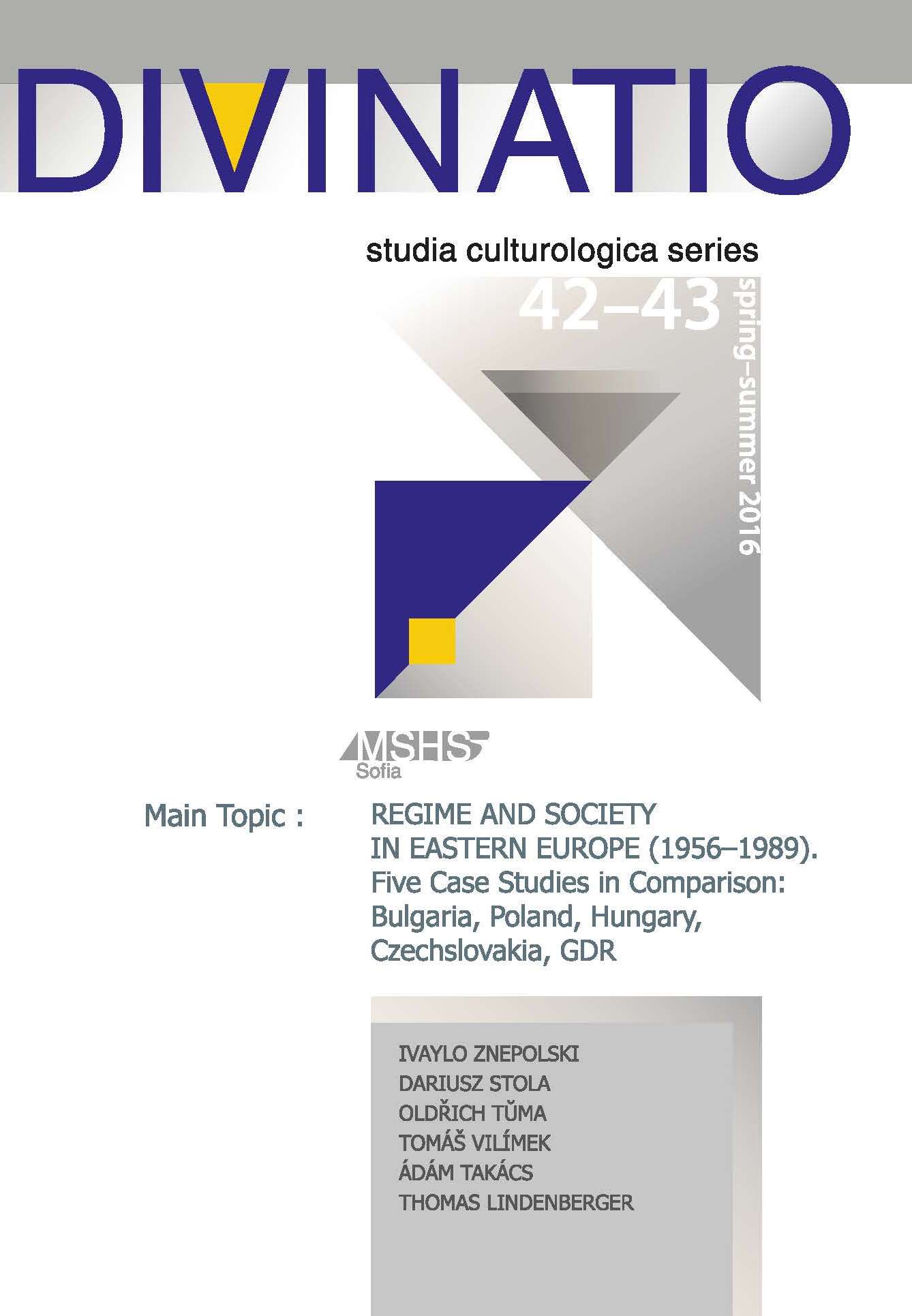
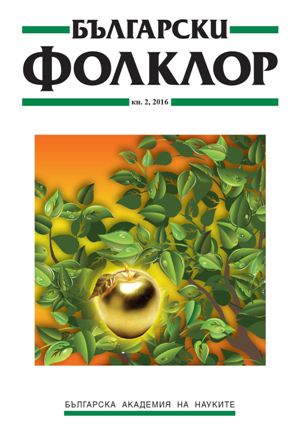
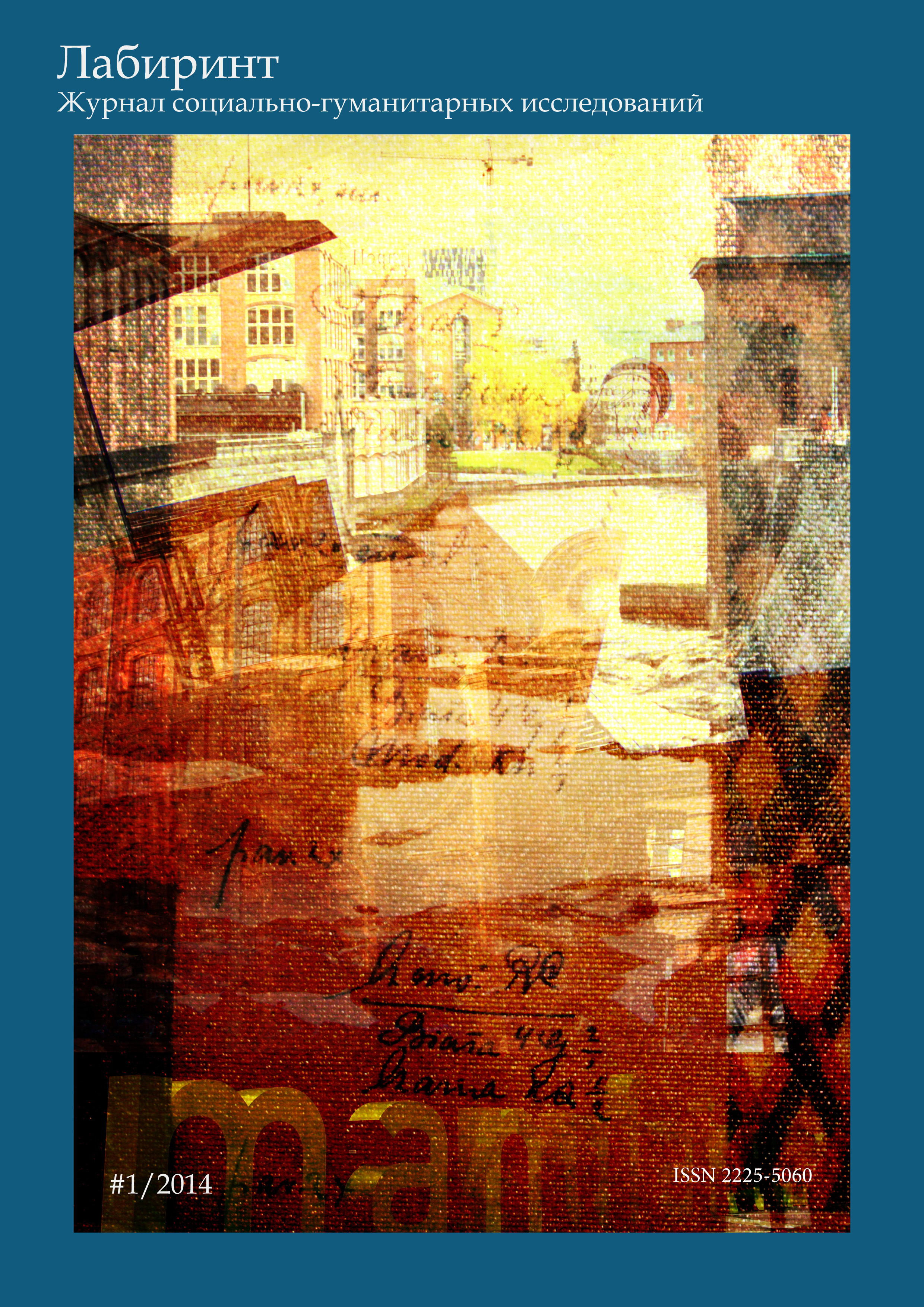
The article is devoted to the features of Ivanovo- Voznesensk industrial development at the turn of the 20th century. It was one of the biggest industrial centers in pre revolutionary Russia. The problem and potential analysis of the local textile industry is made. Also it was studied in the connection with Ivanovo- Voznesensk professional schools activities research. Ivanovo-Voznesensk had more professional schools than contiguous cities.
More...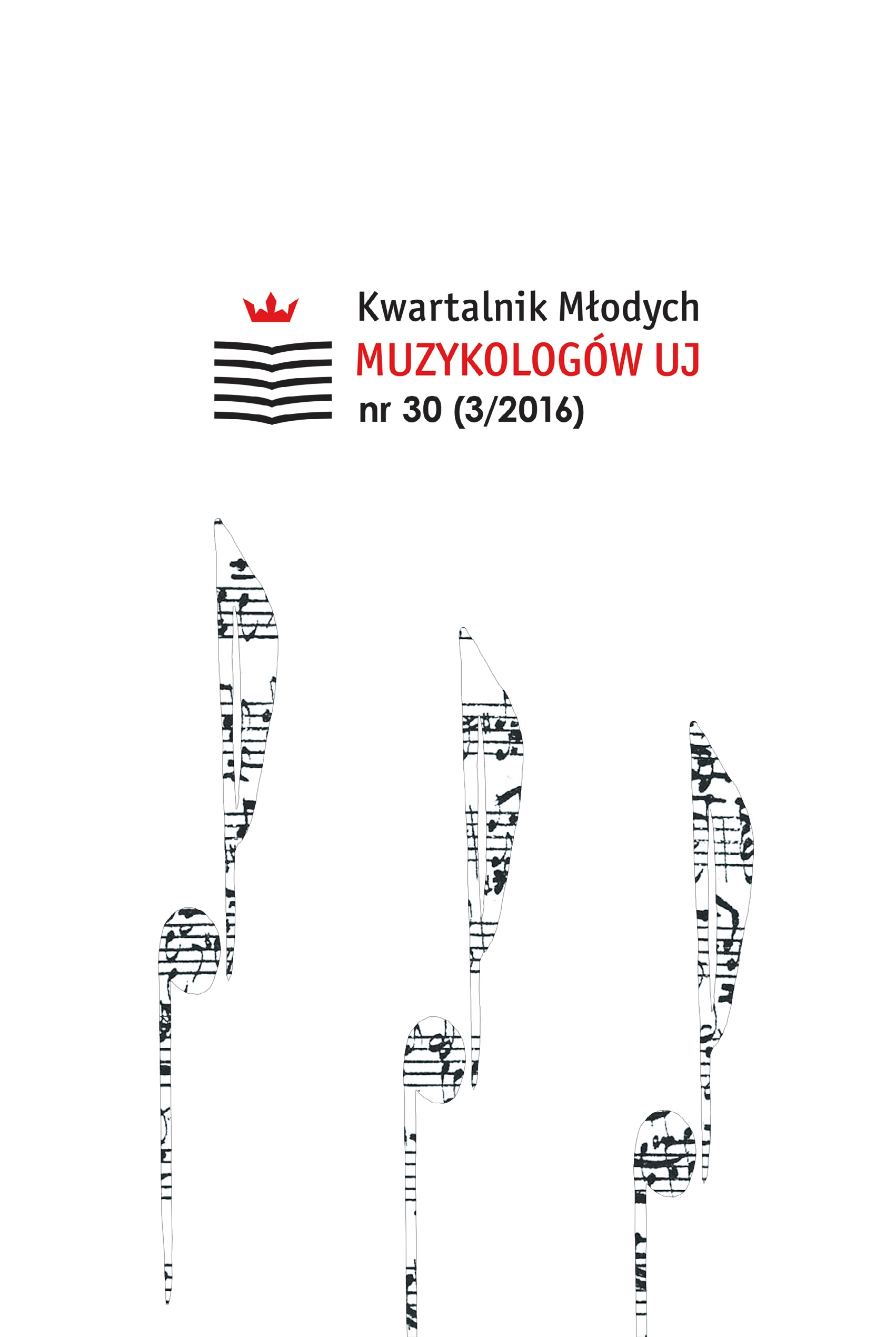
The culture of Georgian chant is variable and particular schools are different from each other. The vital schools are Gelati, Shemoqmedi (West Georgian chant traditions) and Karbelashvilebi (East Georgian chant traditions). The paper presents musical analysis of West Georgian chant traditions, using Gelati school as an example. Scores are taken from Georgian musical manuscripts from the 19th century, which are saved in National Centre of Manuscripts and were written by St. Pilimon the Chanter (Koridze) and St. Ekvtime the Confessor (Kereselidze). The article’s aim is to show how some of the Great Feasts in Georgia were celebrated. The first part contains the examination of some individual aspects of Georgian liturgical practice. The second part synthetises what is important in the process of researching Georgian chant. The analysis shows individuality of the chant material. Diversity and abundance of existing materials gives the opportunity to conduct further research on the topic.
More...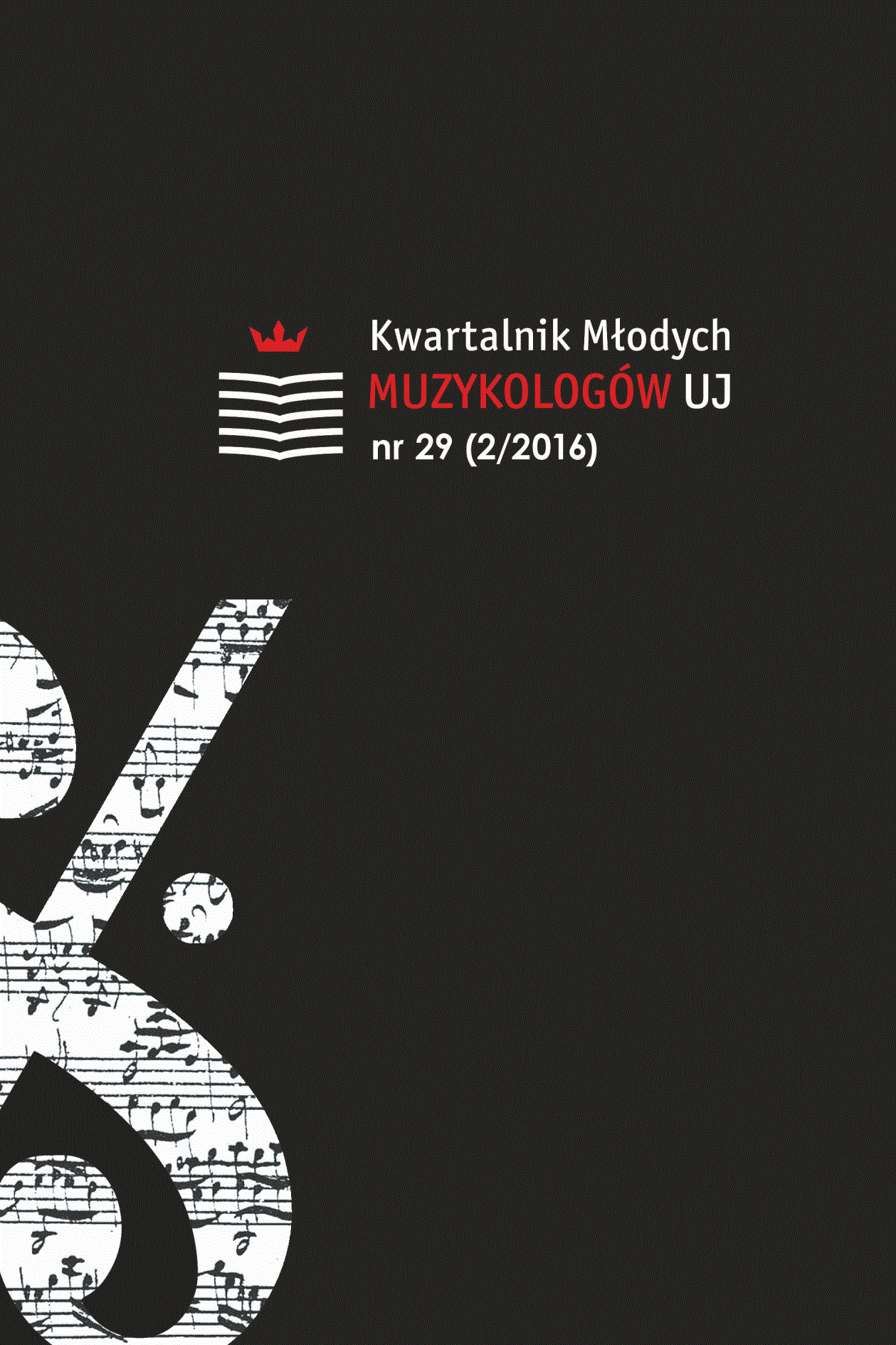
The aim of an article is to show a strategy of creating brand by Metropolitan Opera according to the theory of global culture industry by Scott Lash and Ceila Lury. The main process which plays a significant role in this strategy is a medialisation of the opera, which provides constant update of this genre and helps it to adapt its form for a contemporary consumer. This strategy changes the relation between product and its recipient on several levels and makes an opera a new, fresh and modern music genre, as well as a theatrical and cinematic experience. Expansive Met brand transforms the operatic industry and introduces numerous innovations as Live in HD, iPod applications, Met on Demand, a brand of a singer etc. There’s also a significant aura around this brand, which imposes a form of thinking and causes certain expectations in relation to the consumer goods made by Met. According to the Roland Barthes’ theory of modern myth, the perception of this brand depends also on its history, memory and tradition, as well as being created by the identity itself. Thanks to the innovations and the nature of the event, an access to the opera nowadays is much easier and becomes a sign of a modern era.
More...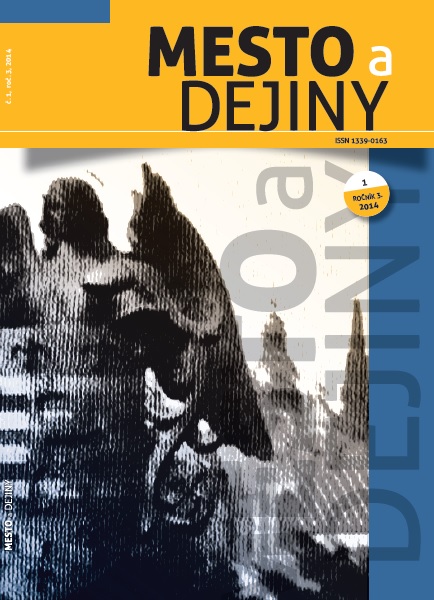
Market towns’ privileges and their system of self-government and administration were similar to the free royal cities. In the late 14th century, Miskolc doubled in size, besides the „Old Town“, the „New Town“ was first mentioned in 1376, with its own weekly fairs and administration, even with a separate parish. The parish church of the New Town, first mentioned in one of the Pope’s deeds in 1445, bore the name of the Holy Virgin Mary as its title. The fact that a cotters’ street or quarter came into being next to the church of the New Town indicates the independence of the New Town and its parish, similarly to the Old Town. The separation of the Old Town and the New Town was a medieval phenomenon, however the dual centres did not survive the Middle Ages, as Miskolc was burnt down by the Turkish troops in 1544. On the ruins of the former parish, a new baroque monastery of the Conventual Franciscans (Minorites) was built in 1720s, and a Minorite scribe made a small drawing in the protocol of the convent showing the outline of the medieval church.
More...
According to the charter issued by Andrew, Bishop of Eger, the Košice burghers were exempted from jurisdiction of Archdeacon of Abaujvár in 1290. Circumstances connected to its origin and then comparison with other charters containing similar privilege seem to be essential factors leading to better understanding of the source. Hereby a very detailed analysis of the text might say more to explain its meaning. Therefore, the cognoscible context of exemptions with the examination of circumstances leading to the issuance of the charter in 1290, along with consideration of the words written in the text, encourage the opinion that the burghers of Košice had been exempted from jurisdiction of Abaujvár´s Archdeacon even before. The Bishop´s charter seems to be only a confirmation of the right allowed earlier, which was a common phenomenon in the towns (or in the communities of guests) of the Hungarian Kingdom.
More...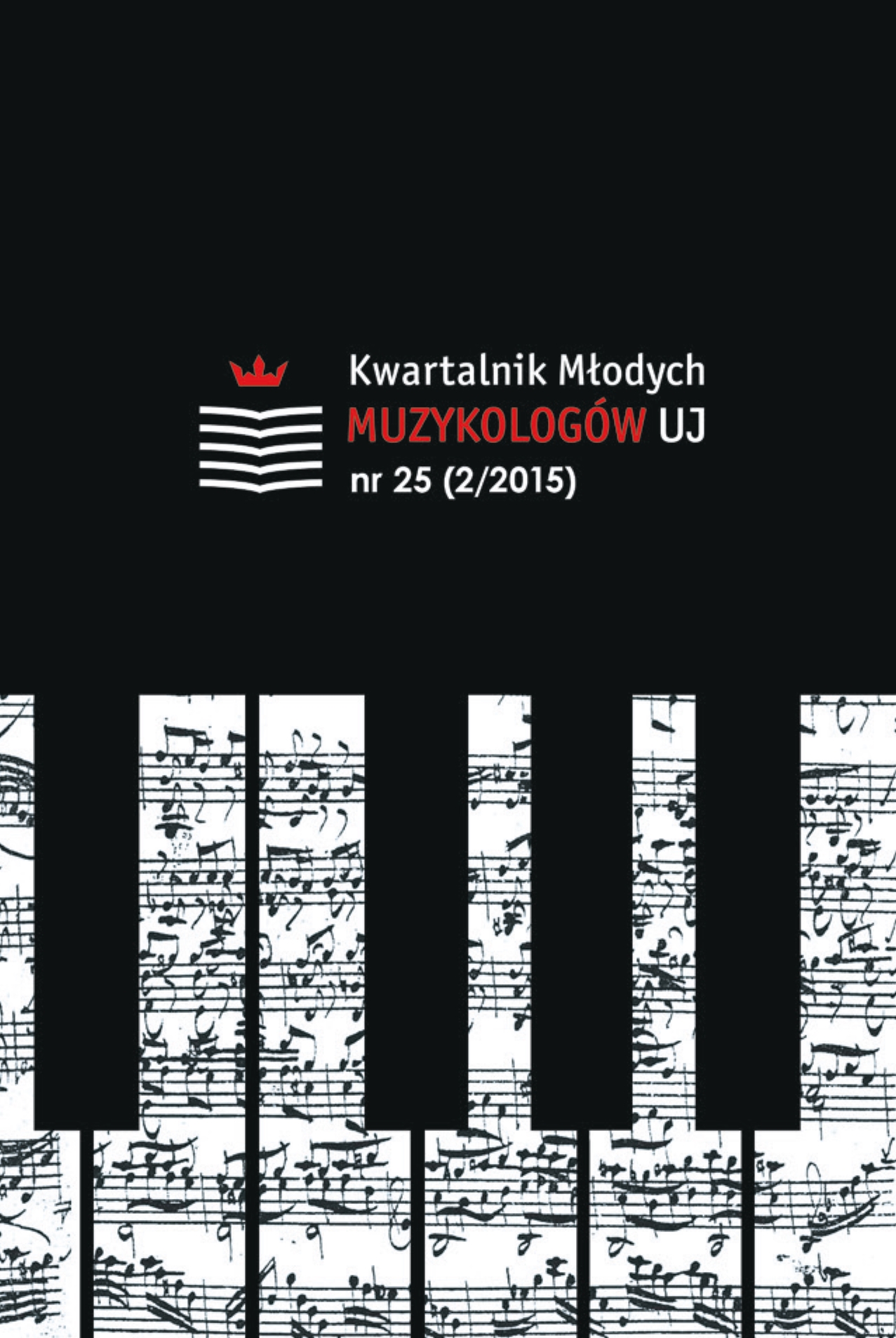
„La buona figliuola” („The Accomplish’d Maid”) is an opera buffa in three acts by Niccolò Piccinni and Carlo Goldoni. The librettist based his text on Samuel Richardson’s novel „Pamela, or Virtue Rewarded”. It was performed for the first time at the Teatro delle Dame, Rome on 6th February 1760 with an all male cast. It was a big success and „La buona figliuola” took Europe by storm. Every European opera house had this opera in its repertoire. The performances were in: Barcelona, Prague, Vien, Dresden, London, Berlin, Mannheim and Paris. This opera was probably performed even in Beijing by Jesuits in 1778. „La buona figliuola” was so popular in Europe that Stanisław August Poniatowski, the King of Poland, wished it for his coronation ceremony. The performance took place at the National Theatre on 7th August 1765, just five years after the world premiere. This opera was also very popular in Warsaw. People loved the story of a simple and good maid Cecchina. Seventeen years later, Wojciech Bogusławski, the director of the National Theater, translated and adapted Goldoni’s opera and named it „Czekina albo cnotliwa panienka” („Czekina or a Virtuous Maid”). He performed it in 1782 with big success. First of all, the article describes the historical context of the creation of libretto – the Carlo Goldoni’s biography. Next, it presents the story of maid Cecchina and the phenomenon of the description of the Polish theories of translation from the 18th century, the Polish version of the opera – „Czekina or a Virtuous Maid”, is presented. Finally, two versions of the libretto – the Goldoni’s and the Bogusławski’s, are compared.
More...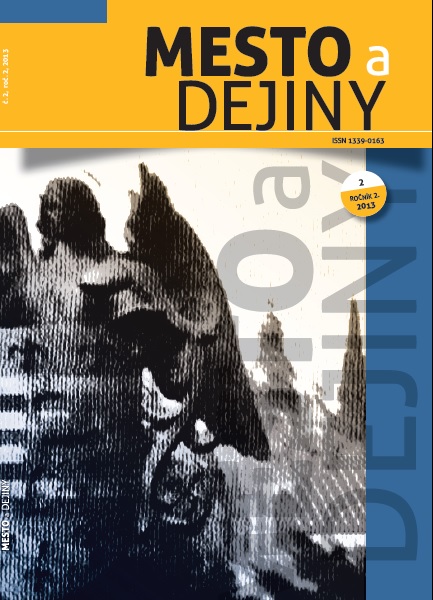
This study presents a biography of one of the burgherois origin officials – Marek Walticher. He was a son of a merchant born in Pressburg. Marek Walticher came from vicinity of Pressburg Catholic patricians, mainly through his mother‘s family. Marek Walticher´s career had three periods. Initially he was employed in the Hungarian Chamber. Later he moved to the Mikuláš Esterhazy palatine barnyard, where he worked as his accountant and then he worked in important position of palatine office clerk. On the top of his career he worked as a main royal customs officer in Magyaróvár and he was appointed by monarch as a royal counselor. The study also presents detailed genealogical analysis of his family and social contacts of his wider kinship.
More...
The study deals with suburban churches and hospitals in medieval Košice. Author evaluates historiography published on this topic and presents results of detailed research of town books and tax registers. The aim of contribution consists of characterizing of the development, i.e. origins and cessation of the buildings, their approximate geographical location as well as the position in the church administration of Košice. The existence of three churches and two hospitals surrounding the walled town has been proved by the research. The main and also the oldest hospital with a church had patrocinium of the Holy Spirit. It laid in front of the Lower Gate on south. As the second one, the church of St. Ladislaus was erected in the northern suburb. The last such objects built here in the Middle Ages were leprosarium and church of St. Leonard on the west side. In addition to this, there was constructed one more church in the town´s cadaster, staying in the village of Košická Nová Ves.
More...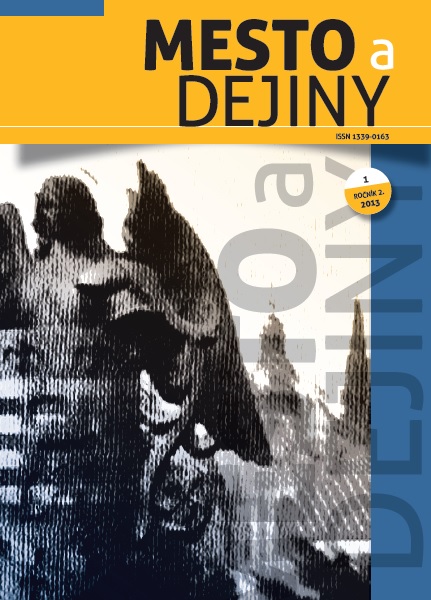
This contribution describes and evaluates four wells explored or documented in 1990s in the streets of Košice. Two of the wells were investigated in Hlavná Street – one of them is located in the Lower Gate area and the other is near the Immaculata. The third well was researched in Dominikánske Square. The well in front of Kováčska Street 26, damaged by a sewer trench, was documented only. Profile of the wells is round, narrowing towards the bottom. Their construction character is identical as well – stone walls built on a wooden base construction. The maximum difference between the bottoms’ levels is 1.5 m. It was impossible to measure the depth and identify the construction method of the well in Kováčska Street – in front of Kováčska 25, as it was situated under the bottom of the sewer trench backfill. Despite the fact that dating of the wells was not possible, it is undoubtable that they were used in the modern era. They disappeared when the city water supply was built in the beginning of the 20th century.
More...
The presented paper deals with the organization of municipal economy administration in Košice in 16th and 17th century. The study is based on the analysis of the lists of elected municipal officials, the account books of city and individual officials from the particular period, which are located in Košice City Archives. It presents and evaluates transfers in the structure of municipal economy administration and its competences in the period of municipal economic and political bloom as well as in the period of its gradual stagnation.
More...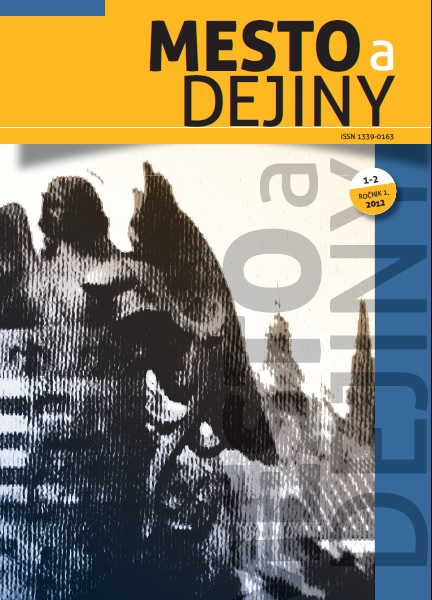
The history of Košice in the 16th century exemplifies a Micro History of the Reformation including all local particularities. The three persons from the church background in the town represent three characteristic types and three developmental phases of initial period of the Reformation in Košice. During this time the initiative shifted from clergy to the city council, which unprecedentedly extended his competence into theology and mainly liturgy. At the same time, contact with other towns in the region and also with Wittenberg was reinforced due to the correct interpretation of reformation teachings. At that time, the city council presented itself as a competent institution with the right and the duty to uphold the responsibility for religious issues also in theological meaning.
More...
The paper deals with issues pertaining to the relations and communication between the representatives of the town administrations in Košice, Bardejov and Prešov in the 15th century. The reflection of these relations may be found in correspondence preserved in the archives of these towns. These documents have made the author to note that mutual cooperation was developed among the towns, especially in the field of the town diplomacy by sending common town delegates to the Royal court and high dignitaries of the Kingdom and to the common consultations of the towns. Military aff airs and espionage were another area of cooperation between the towns. If the towns were not directly threatened, in many areas (economy, trade) they acted like rivals. One example is the cause between Bardejov and Prešov because of bleaching linen, lasting for the whole 15th century.
More...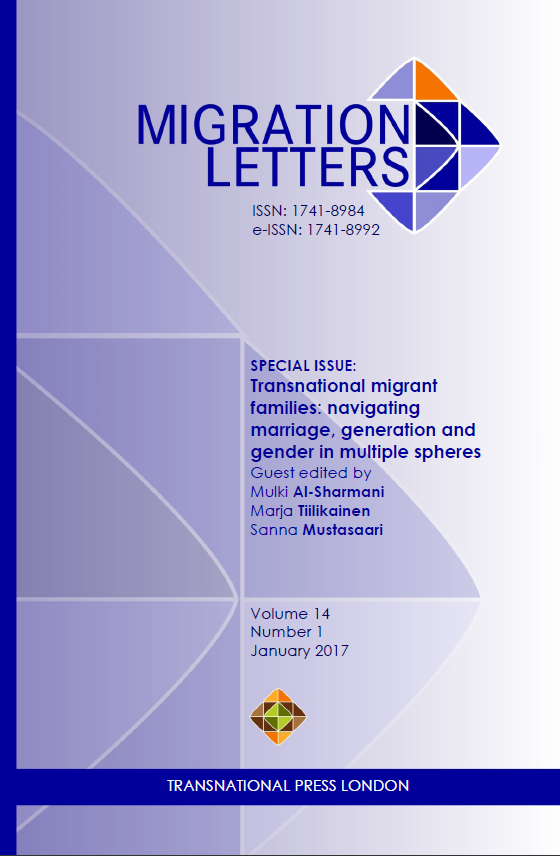
The European Union (EU) has faced one of its biggest crises with the rise of population inflows through its Eastern and Southern neighbours as well as movements within the Union. In 2016, the main debate that dominated Europe was on restricting migration within and into the EU along with concerns and objections to the refugee quota systems and the sharing of the burden among member states. Turkey emerged as a ‘gate keeper’ in this crisis and has since been at the centre of debates because of the large Syrian refugee population in the country and billions of Euros it was promised to prevent refugees travelling to Europe. The Syrian crisis produced over 4.8 million refugees with over 2.8 million were based in Turkey by the end of 2016. Turkey with its generous support for Syrian refugees has been confirmed as a ‘country of security’. This shadows the darker side of affairs as the very same country has also produced millions of asylum seekers since the 1980 military coup. Current circumstances and fresh evidence indicate that there will be more EU bound refugees coming through and from Turkey.
More...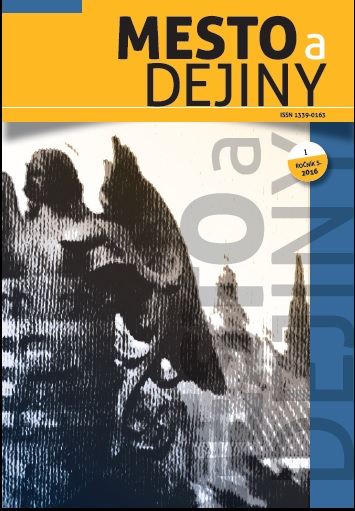
Besides its main tasks – judiciary and executive, the town administration fulfilled a variety of functions ranging from economic production through defense and protection of its citizens, to the development of culture and education. This required oversight and stewardship by municipal dignitaries and extensive system of urban employees. The paper deals with the management of urban employees and town dignitaries responsible for major sectors of town economy, security, health care, culture and other areas of urban living. The author analyzes the position of urban employees and contracts made by town. Management of urban facilities belonged to the main duties of the elected members of the municipal court. Economic facilities (mills, granary), supervision of wine trade, linen weaving or patronage of hospitals represented the main areas of their functions. An important place among municipal employees belonged to servants in judiciary, diplomacy and urban defense. Specific field, financed by the town council, represented the area of art and culture, where painters, masons, organists and trumpeters were employed.
More...
This paper focuses on the importance of understanding cultural and communication boundaries when teaching a foreign language. This topic is extremely relevant to the field of translation and interpretation as it provides us insight into the challenges that we encounter in trying to convey a message that has its cultural specificity. We aim to solve one of the most difficult aspects of rendering a message into a target language to someone who is learning it. We also wish to facilitate foreign language teaching by means of better understanding some cultural concepts on our part. We have investigated innovative methods, and we have conducted multiple surveys for us to gain more perspective on the matter. We have gathered key findings that we will make use of in our new approach to teaching foreign languages.
More...
This article undertakes a comprehensive literature review to explore the complexities of managing and assessing collaborative group work in multicultural classrooms in the post-pandemic educational landscape. Anchored in Milton Bennett’s Developmental Model of Intercultural Sensitivity (DMIS) and Jude Carroll’s insights on educational mobility, the review critically examines the theoretical underpinnings and practical challenges associated with diverse learning environments. Bennett’s DMIS is employed as a framework to understand and navigate cultural differences within the classroom, while Carroll’s research provides an in-depth look at the adaptation challenges of educationally mobile students. Through a synthesis of existing literature, this paper proposes practical strategies for educators, aiming to enhance group dynamics and improve assessment methods in a way that promotes inclusivity and fairness. The goal is to enrich the academic discourse by providing a nuanced analysis of multicultural group work management and assessment, drawing from a wide range of empirical studies and case analyses.
More...